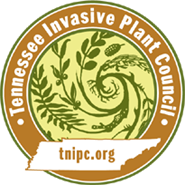Bromus tectorum L.
Cheat Grass, Downy Brome, Downy Chess| Category |
|---|
| Grass |

Description
Height
Cheatgrass grows to 2 feet (5-6 m) tall.Stem
Has a branched base and is typically rusty-red to purple after flowering maturity. Stems are covered in small, soft hairs.Leaves
Leaves have pubescent blades and sheaths, and their blades are flat, 1/8 to 1/4 inch (0.32-0.64 cm) wide. The leaves are rolled in the bud, with ligules 1/16 to 1/8 inch (0.16-0.32 cm) long, membranous, rounded to collar-shaped, with long pointed teeth. Auricles absent.Flowers
The flowers are perfect and appear in the spring. They are usually greenish, red, or purple.Fruit
Seed head is an open, drooping, branched panicle. The spikelets contain 5 to 8 florets; glumes and lemmas are pubescent or downy; lemmas are narrow with awns 5/8 inch (1.59 cm) long or longer. The seeds can be distributed by wind and gravity or attach to passing animals.Photo: Richard Old, XID Services, Inc., Bugwood.org
More images of Bromus tectorum
Life History
Cheatgrass is an annual plant. Seeds germinate in the late fall or early spring. Vast numbers of seedlings usually appear after the first rain in infested areas. It has rapid spring growth, with seeds maturing 2 months after germination. Reproduction from seed makes it a very aggressive weed. It is fair to good forage for livestock prior to flowering, then has little value except for watershed protection. It crowds out native species and can create a monoculture. Other common names for this species include Broncograss, Downy Brome, Downy Chess, and Soft Chess.Habitat
Bromus tectorum is adapted to all kind of soils except extremely wet or extremely saline or alkaline, and thrives where there is only weak competition from perennial native or introduced plants. It grows on all exposures and all types of topography from desert valley bottoms to the tops of the highest mountain peaks.Origin and Distribution
Cheatgrass is native to Eurasia and Northern Africa. Many independent introductions are likely including those from ship ballast, contaminated crop seed, packing material and at least one deliberate introduction for a college experiment in Pullman, Washington. Other States Where Invasive: Bromus tectorum is found in every state in the USA. Federal or State Listed as Noxious Weed, Prohibited, Invasive or Banned: CO, CTSources
Haragan, P.D. 1991. Weeds of Kentucky and Adjacent States: A Field Guide. The University Press of Kentucky. Lexington, Kentucky.Southeast Exotic Pest Plant Council. 1996. Invasive exotic pest plants in Tennessee (October 1999). Research Committee of the Tennessee Exotic Pest Plant Council. Tennessee.
Southern Weed Science Society. 1998. Weeds of the United States and Canada. CD-ROM. Southern Weed Science Society. Champaign, Illinois.
